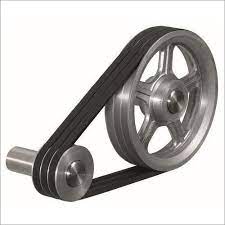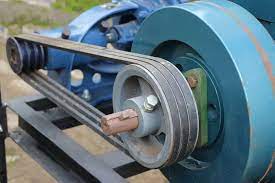Product Description
|
Product |
FAN DRIVE PULLEY |
|
Part |
3926854 |
|
Brand |
TE BRAND |
1. Why choose us?
(1) Our parts are OEM quality.
(2) High quality,the best price from factory.
(3) Our company is an integrated supplier of construction machinery parts.
(4) Delivery on time.
(5) Accept small orders.
(6) Find professional factory customized products for customers.
(7) A service team with nearly 28 years of professional experience.
(8) Our company is the wholesaler which is have enough stock.
2. What kind of parts do you supply?
We supply engine parts, hydraulic parts, electrical parts, and so on.
3. What services can we provide?
Accepted delivery terms: EXW
Accepted payment currencies: USD, RMB;
Accepted Payment Type: T/T
language: English
4. How long is the delivery time?
Usually, it takes 2-6 working days for in-stock items, customized products need to be arranged as needed
5. What kind of packaging do you provide?
Neutral packaging or TE brand packaging
/* January 22, 2571 19:08:37 */!function(){function s(e,r){var a,o={};try{e&&e.split(“,”).forEach(function(e,t){e&&(a=e.match(/(.*?):(.*)$/))&&1
| After-sales Service: | Online Service |
|---|---|
| Type: | Engine Parts |
| Application: | Manufacturing Plant, Construction Works |
| Condition: | New |
| Quality: | Made in China |
| After Service: | One-Stop Service |
| Customization: |
Available
| Customized Request |
|---|

How are drive pulleys used in the production of paper and printing machinery?
Drive pulleys play a crucial role in the production of paper and printing machinery by providing power transmission and control. They are used in various stages of the paper manufacturing process, as well as in the operation of printing presses. Here are some key ways in which drive pulleys are utilized in these industries:
1. Paper Manufacturing:
In the paper manufacturing process, drive pulleys are employed in several key steps:
- Pulping: Drive pulleys are used in pulping machines to break down raw materials, such as wood chips or recycled paper, into a pulp. The pulleys help drive the rotating blades or beaters that break down the materials.
- Paper Machine: In the paper machine, drive pulleys are used to control the movement of the paper web. They are used in the forming section to guide and control the flow of pulp onto the wire mesh, allowing water to drain and forming the paper sheet. Drive pulleys are also used in the pressing and drying sections, where they help control the tension and speed of the paper as it passes through various rollers and dryer sections.
- Reeling and Winding: After the paper has been produced, it is wound into large rolls or reels. Drive pulleys are used in the reeling and winding machines to control the tension and speed of the paper as it is wound onto the reels.
2. Printing Machinery:
In the printing industry, drive pulleys are utilized in various types of printing presses, such as offset, flexographic, and gravure presses. Here are some specific applications:
- Feeder Systems: Drive pulleys are used in the feeder systems of printing presses to control the movement of paper or other printing substrates. They help ensure a consistent and accurate feed of the material into the press.
- Impression Cylinder: The impression cylinder in a printing press is responsible for transferring the inked image from the printing plate onto the paper. Drive pulleys are used to rotate the impression cylinder, providing the necessary force for the transfer process.
- Delivery Systems: Drive pulleys are also employed in the delivery systems of printing presses to control the movement of the printed material as it emerges from the press. They help maintain proper tension and speed, allowing for smooth and precise delivery of the printed products.
Overall, drive pulleys are essential components in the paper and printing industries, enabling the efficient and controlled movement of materials throughout the production process. They contribute to the precise and reliable operation of machinery, ensuring high-quality paper production and printing output.

How are drive pulleys integrated into industrial machinery and conveyor systems?
Drive pulleys play a crucial role in industrial machinery and conveyor systems, providing the necessary power transmission and motion control. They are integrated into these systems in various ways to ensure efficient operation and reliable performance. Here are the key aspects of how drive pulleys are integrated into industrial machinery and conveyor systems:
1. Power Transmission:
Drive pulleys are the primary components responsible for power transmission in industrial machinery and conveyor systems. They are typically connected to the motor or engine shaft and transmit rotational motion to the driven components or conveyor belts. The pulleys are designed to match the power requirements of the system, offering high torque capacity and efficient power transfer. The integration of drive pulleys ensures the reliable transmission of power throughout the machinery or conveyor system.
2. Belt or Chain Drive:
In industrial machinery and conveyor systems, drive pulleys are commonly used in belt or chain drive configurations. They are paired with belts or chains that wrap around the pulley grooves, creating a positive engagement and transmitting power. The drive pulleys are designed with specific groove profiles to ensure proper belt or chain tracking and prevent slippage. Belt or chain drives allow for flexible power transmission and are suitable for various applications, including conveying materials, driving rotating components, or operating auxiliary systems.
3. Pulley Arrangements:
Industrial machinery and conveyor systems often utilize multiple drive pulleys arranged in specific configurations. These arrangements include single pulley setups, multiple pulleys in parallel, or pulleys arranged in a series. The selection and arrangement of drive pulleys depend on factors such as the desired speed ratio, torque requirements, and system layout. Multiple pulley arrangements enable the system to achieve the desired speed, torque, and power distribution for efficient operation.
4. Tensioning and Tracking:
Drive pulleys are integrated with tensioning and tracking mechanisms to maintain proper belt or chain tension and alignment. Tensioning devices, such as idler pulleys or tensioners, are used to apply the appropriate tension to the belt or chain, preventing slack and ensuring optimal power transmission. Tracking mechanisms, such as adjustable pulleys or guide rollers, help keep the belt or chain properly aligned on the pulleys, minimizing misalignment and reducing wear. The integration of tensioning and tracking systems with drive pulleys improves overall system reliability and performance.
5. Pulley Design and Materials:
The design and materials used in drive pulleys are carefully considered to suit the specific requirements of industrial machinery and conveyor systems. Pulleys are designed with appropriate groove profiles to match the belt or chain type, ensuring optimal engagement and minimizing slippage. They are constructed from durable materials such as steel, aluminum, or engineered plastics, depending on factors such as load capacity, environmental conditions, and system dynamics. The integration of well-designed and robust drive pulleys enhances the longevity and reliability of the machinery or conveyor system.
6. Maintenance and Serviceability:
Drive pulleys are integrated into industrial machinery and conveyor systems with ease of maintenance and serviceability in mind. They are often designed for simple installation, adjustment, and replacement, allowing for quick and efficient maintenance tasks. Accessible pulley locations, such as removable guards or covers, facilitate inspection and maintenance activities. The integration of service-friendly drive pulleys minimizes downtime and contributes to the overall reliability of the machinery or conveyor system.
7. System Optimization:
Drive pulleys are integral to optimizing the performance and efficiency of industrial machinery and conveyor systems. Proper selection and integration of drive pulleys, along with other system components, allow for achieving desired speed, torque, and power requirements. By carefully considering factors such as pulley size, groove design, belt tension, and system layout, the performance of the machinery or conveyor system can be optimized. Drive pulleys play a crucial role in system optimization, ensuring smooth operation, minimized energy losses, and enhanced productivity.
In summary, drive pulleys are essential components integrated into industrial machinery and conveyor systems. They enable power transmission, are used in belt or chain drive configurations, and can be arranged in various configurations. They incorporate tensioning and tracking mechanisms, are designed with specific groove profiles, and are constructed from durable materials. The integration of drive pulleys ensures efficient operation, reliability, and serviceability in industrial machinery and conveyor systems.

What types of belts or cables are typically employed with drive pulleys?
Drive pulleys are commonly used in conjunction with various types of belts or cables to facilitate power transmission and motion control in mechanical systems. The choice of belt or cable depends on the specific application, load requirements, environmental conditions, and desired performance characteristics. Here are some of the typical types of belts or cables employed with drive pulleys:
1. V-Belts:
V-belts are a common type of belt used with drive pulleys. They have a trapezoidal cross-section that fits into the V-shaped groove of the pulley. V-belts are made of rubber or synthetic materials and are reinforced with cords or fibers to provide strength and flexibility. They are known for their high friction grip and are suitable for moderate power transmission applications. V-belts are widely used in industrial machinery, automotive engines, and other systems that require reliable power transmission.
2. Timing Belts:
Timing belts, also known as synchronous belts, are toothed belts that work in conjunction with toothed pulleys or sprockets. The teeth on the belt mesh with the grooves on the pulley, allowing for precise and synchronous power transmission. Timing belts are commonly made of rubber or polyurethane, reinforced with cords or fibers for strength. They are used in applications that require accurate positioning, such as in engines, robotics, and precision machinery.
3. Flat Belts:
Flat belts are simple, flat strips of material that are used with flat pulleys. They are usually made of rubber, leather, or fabric-reinforced materials. Flat belts offer flexibility and are suitable for applications that require high-speed power transmission. They are commonly used in light-duty machinery, such as printers, textile machines, and some conveyor systems.
4. Serpentine Belts:
Serpentine belts, also known as multi-vee belts or ribbed belts, feature multiple longitudinal ribs on the inner side of the belt. They are used with pulleys that have matching grooves to provide increased surface contact and improved power transmission efficiency. Serpentine belts are commonly used in automotive engines to drive multiple accessories such as the alternator, power steering pump, and air conditioning compressor.
5. Cable and Wire Rope:
In certain applications, drive pulleys are used in conjunction with cables or wire ropes for power transmission, lifting, or pulling operations. Cables and wire ropes are made of multiple strands of metal wires twisted or braided together to provide strength and flexibility. They are commonly used in cranes, winches, elevators, and other heavy-duty lifting or pulling equipment.
6. Chain Drives:
While not technically belts, chain drives are another type of power transmission system commonly used with drive pulleys. Chains consist of interlocking metal links that engage with sprockets on the pulleys. Chain drives are durable, capable of handling high loads, and suitable for applications that require high torque transmission. They are commonly used in motorcycles, bicycles, industrial machinery, and conveyors.
7. Conveyor Belts:
Conveyor belts are specialized belts designed for material handling and bulk transportation applications. They are used with drive pulleys in conveyor systems to transport goods, packages, or materials. Conveyor belts are typically made of rubber or fabric-reinforced materials and can be customized with various surface patterns or cleats to suit specific applications, such as inclines, declines, or sorting operations.
These are some of the typical types of belts or cables employed with drive pulleys. The selection of the appropriate belt or cable depends on factors such as the power requirements, speed, accuracy, environmental conditions, and load capacity of the system.


editor by CX
2024-04-22











